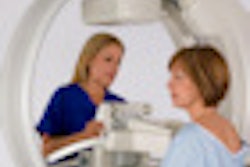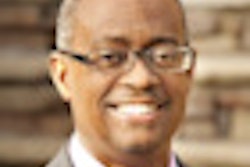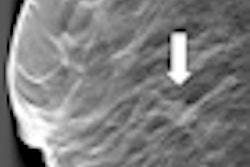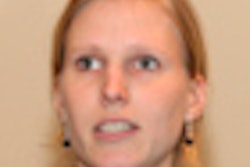Dear AuntMinnie Member,
The debate that refuses to die -- screening mammography -- revs up again this week with two articles on issues related to breast screening.
In the first story, Danish researchers investigated what they called the "psychosocial" effects of false positives on breast screening. They found that false positives cause mental anguish in women -- no surprise there -- and the effects can last as long as three years after the initial finding.
In the second article, researchers from the University of California, San Francisco examined rates of advanced cancer and other factors signifying pathology in a group of nearly 1 million women who received breast screening.
They found that screening every two years was just as good as annual screening for nearly all women ages 40 to 74, with the exception of women 40 to 49 who had extremely dense breast tissue. If these women were screened less frequently, they had nearly twice the odds of having advanced-stage cancer, and more than twice the likelihood of a larger tumor.
The researchers also calculated false-positive rates for the different groups of women. They found that rates were much higher in younger women with denser tissue -- the same ones who benefited from more frequent screening. This "risk" of mammography counterbalanced the benefit of finding more advanced-stage cancer, according to the group.
But does it really? Both articles reflect a relatively recent stream of thought among public policy researchers and breast screening skeptics that equates the perceived "harms" of mammography -- false positives and the like -- to its benefit of saving lives. The harms of breast screening have been glossed over in recent years by mammography proponents, they say, and should be communicated to patients when discussing issues such as how often women should be screened.
It's a fair enough argument. In their zeal to boost screening compliance rates, mammography advocates may have oversold the technology's benefits and downplayed its drawbacks. But now we're running the risk of sending the pendulum too far in the other direction, needlessly frightening women with talk of "risks" and "harms" that pale in comparison to the biggest harm of all -- breast cancer.
Breast screening skeptics say that clinicians should discuss mammography's benefits and risks with women before deciding who should be screened and how often screening should occur. But these skeptics might benefit from such a conversation themselves -- it could give them a better perspective on how women view the debate.
Finally, check out a profile of a recent book that explores the roots of the screening mammography controversy. Interestingly, today's debate is only the latest in a controversy that has gone on for decades. Learn more by clicking here, or visit our Women's Imaging Digital Community at women.auntminnie.com.
Congrats on the Match
In other news, the Main Residency Match took place on March 15, and the National Resident Matching Program (NRMP) said it was the largest in its history, according to an article in our Residents Digital Community.
Radiology filled 91.5% of all available slots, with 14 positions going unfilled. Ironically, the number of radiology resident slots in this year's match grew by 29 over 2012. Read more statistics by clicking here.
While you're in the community, check out this article about how residents should view quality improvement projects as opportunities for professional enrichment, rather than as onerous burdens.



















